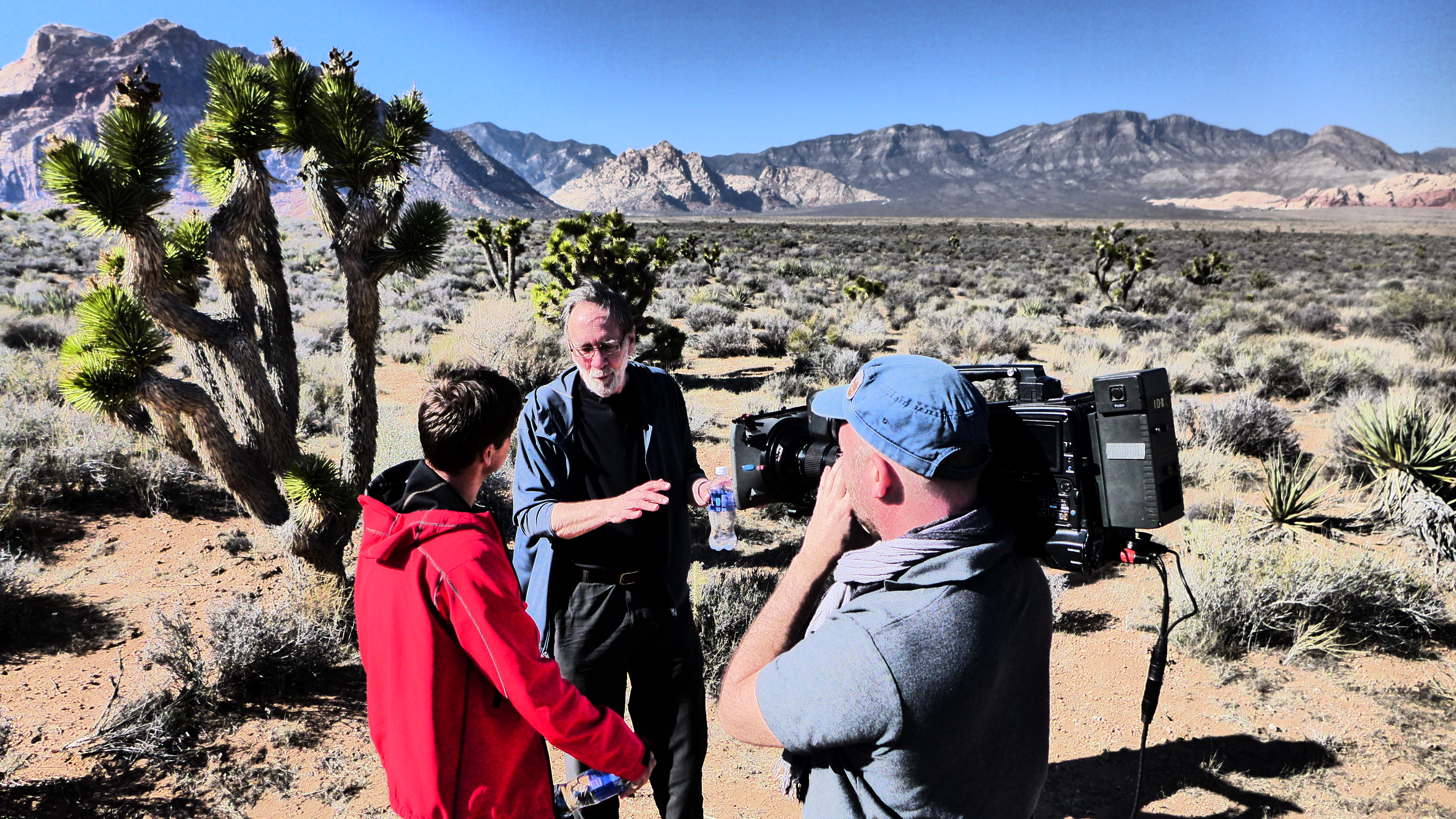Poker Mission Impossible
In January I got an email from Linda Köb, a producer of the show Galileo. No, I’d never heard of it either. Turns out it’s a German education, travel, science, news, reality TV show that has been one of Europe’s most popular programs for over fifteen years. They’re planning a series of episodes where one of their reporters, one Harro Füllgrabe, tries to learn a complex skill in a mere 48 hours. The skill du jour: poker.
I tried to explain to Linda that you cannot possibly teach someone to play poker in just two days. “Oh, that doesn’t matter,” she said. “We want to film the process. We’ll see how well he learns when he plays in a real cash game.” So off to Las Vegas I went — all expenses paid.
Harro turned out to be a fascinating character. He was a soccer enthusiast, sports reporter and most recently the star of “Harros verrückte Reise um die Welt” which translates roughly as “Harro’s insane travels around the world.” These have taken him to the Amazon rain forest where, following tribal tradition, he got hammered drinking a potent alcoholic “cocktail” while marching, dancing and singing with the Shaman of a Amazonian tribe, a temple in Calcutta where he handled a cobra, and a remote village in Papua New Guinea where he was groped by the village elder to find out how well hung he was. Here he is with the snake — you do not want to see the others.

Now here he was in the most insane place of all, Las Vegas, downtown on Fremont Street leaning on the Whisky Licker bar at Binions[1] with me, two of my poker playing friends, Linda Johnson and Bob Fisher who agreed to help with the project and the crew from Maximus Film, the production company.
Linda Johnson is one of the best poker players in the world. Known widely as The First Lady of Poker, she is one of a handful of women to have won a WSOP bracelet in an open event. She played poker professionally for some thirty years. She also published Card Player magazine and now runs Card Player Cruises and the charity Poker Gives. She still plays at the nosebleed levels. Her job was to teach Harro the basics: hand strength, position, when to fold, bet or raise.
Bob is a well-known local player who runs the tournaments for the WPDG (Wednesday Poker Discussion Group) and chairs the weekly meetings. Bob also has advanced degrees in Applied Mathematics and his job was to teach Harro about odds, how to count “outs” (cards that can win a hand), how to determine what the mathematically optimum play is and a little bit of game theory.
My role was, of course, psychological. I was to teach Harro about emotions and emotional control, how to read others, understand body language, how to look for tells and, most importantly, how to deal with the bad things that can (and will) happen at the table. Here we are in the desert getting ready to film a meditation session.

The next two days were a riot, one hilarious event followed by another one and all on tape. We talked poker in bars, at mock-up tables and at a staged play-money tournament. Bob took Harro to the roof top of Binions at night and drew equations on the protective glass walls around the deck of the swimming pool with the lights of Vegas twinkling in the background. Linda dealt hand after hand after hand explaining how to play position, how to understand what a good starting hand was, what a bad one was and, critically, what starting hands are justifiably called “trouble” hands — because that’s what you often end up in if you play them at the wrong time or in the wrong position.
In the desert we sat on ancient, red stone outcroppings, stared at desiccated cactus branches and talked about how to remain calm, how to refocus when your attention has wandered, how to control your emotions. We talked about when to be serious, when have fun, when to talk, when to listen. My main message: try to make the right decisions and do not worry what happens. If you made the right decision but still lost the hand, congratulate yourself. If you make the right decisions more often than the others you will be fine.
On the third day we held a real cash game: No limit hold ‘em with, $1 - $2 blinds. Binions hosted it, raked the pot like any other game and supplied a dealer. But the game was anything but ordinary. We brought in nine players from the WPDG. These folks are good. Two of them play poker professionally. One is a poker instructor and the others were all seasoned, experienced players. I, quite honestly, would not fare well against this line up. In fact, if it were the only game going, I’d go find another card room. We threw Harro into the lion’s den — until now he had never played a hand of poker in a real card room.
Linda, Bob and I expected a fast crash and burn session. We got anything but. Harro played remarkably well. We coached him between hands if he made a mistake and talked about each decision. The game was a hoot, Harro told jokes, laughed it up, the whole table got into the action. People went broke and re-bought. Harro was up, down, even, down again. He learned one thing well — how not to lose too much with so-so hands, an important skill. Here he tries staring down one of the WPDG players while Bob, Linda and I watch. It worked, Tim folded.

On the last hand of the two-hour session he was down about $80 and did something really weird. When Randi (orange shirt) raised, he went all-in without looking at his cards! She called with A♠,K♠ and Harro turned over a truly pathetic hand, Q♥,3♦.
And when the five cards hit the board … well, you’ll have to tune in to the show to know how it ended. But it was pure drama and Harro knew it. If he hits the miracle we have a magic moment. If he doesn’t he goes broke and we have a tragic moment — either one is good theater.
Now that the show has aired (May, 2014) I can reveal that Harro hit the miracle card! The flop and turn were no help but the river was a Q, one of only six cards that would take down the hand. The whole room went nuts with high fives, hugs, fist bumps and looks of incredulity. Good theater!
So, we did it, I guess — turned a novice into a decent player in two days. He held his own with some of the best mid-level players in Vegas. We all celebrated in Binions’ steak house — on Maximus’s dime.
[1] Thanks to Michele Richardson of Binions for allowing us in, treating us like royalty and giving us the use of the grand old “Gambling Hall” and to Frank Schlattner, photographer.


 Arthur S. Reber
Arthur S. Reber